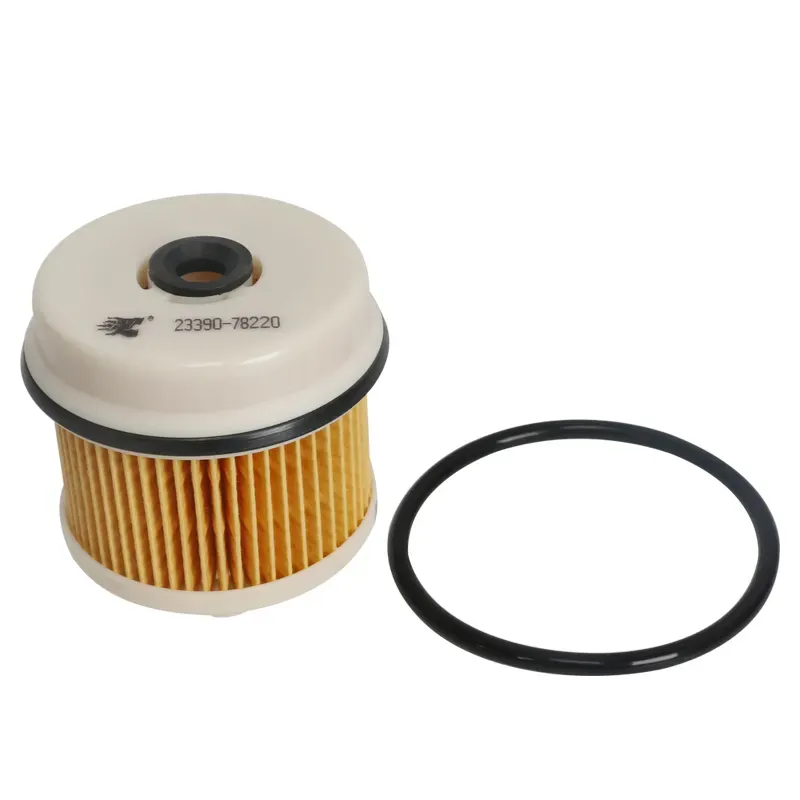Aug . 15, 2024 15:36 Back to list
Here are the Top 4 Signs of a Bad Fuel Filter
Here are the Top 4 Signs of a Bad Fuel Filter
Most older vehicles have an external fuel filter that traps dirt and other contaminants to prevent them from reaching the fuel injectors. The filter is supposed to be replaced periodically, but many drivers fail to do so.
Lack of upkeep often causes the filter to become obstructed, leading to one or more noticeable problems.
Common Symptoms of a Bad Car Fuel Filter
Nearly all newer vehicles have a non-serviceable fuel filter located inside of the gas tank. In most cases, if your car has this type of setup, you don’t have to worry about replacing the filter periodically.
But external fuel filters that are mounted outside of the gas tank are a different story. External inline filters should be replaced according to the vehicle manufacturer’s service schedule. Otherwise, the filter can eventually become clogged with dirt and other contaminants. The obstruction will restrict fuel flow to the injectors, causing low fuel pressure and a lean (too little fuel) running condition.
Some of the most common clogged fuel filter symptoms include:
Engine Performance Problems
An obstructed or dirty fuel filter can cause a loss of fuel pressure. As a result, the engine may exhibit performance problems, such as hard-starting, rough running, stalling, and a lack of power.
Illuminated Check Engine Light
Your car’s engine computer looks for problems, such as a lean running condition caused by a faulty fuel filter, that could lead to an increase in emissions. Usually, the device will recognize these issues, turn on the check engine light, and store a corresponding diagnostic trouble code (DTC) in its memory.
Fuel Filter Element diesel engine fuel filters 23390-0L070 23390-0L090 for HILUX
Vehicle Cranks But Doesn’t Start
In extreme cases, a clogged fuel filter can prevent the engine from getting proper fuel pressure, resulting in a vehicle that cranks but doesn’t start.
Fuel Leaks
Over time, the car’s fuel filter may develop leaks due to rust and corrosion. Such problems are most common in areas where there’s a lot of salt on the roads during the winter.
Where is the Fuel Filter Located?
Most vehicles built before the mid-2000s have an external fuel filter that’s mounted outside of the gas tank. This type of filter is typically located on the frame rail or somewhere in the engine compartment (e.g., the fender or shock tower). The filter’s exact location will vary by vehicle.
As was mentioned, very few late-model vehicles have an external fuel filter. Instead, the filter is usually part of the fuel pump module located in the fuel tank. These types of fuel filters are generally considered non-serviceable, meaning they do not have a recommended replacement interval.
How Often Should I Change the Fuel Filter?
Recommended fuel filter replacement intervals can vary from 30,000 to 100,000 miles, depending on the vehicle. Exactly when you should replace your fuel filter will depend on the type of car you have.
To determine when your filter is due for replacement, you’ll want to consult the vehicle manufacturer’s service schedule. You’ll find this information listed in your owner’s manual or supplemental service booklet.
-
Toyota Corolla Hatchback Cabin Air Filter – High Efficiency & Easy Installation
NewsJul.08,2025
-
Premium Canister Fuel Filter Supplier High Quality Oil Filtration Solutions
NewsJul.08,2025
-
Premium Car Filter Oil Solutions Leading Car Oil Filter Exporter Hyundai Car Oil Filter Exporters
NewsJul.08,2025
-
Buy 17x21x1 Air Filter – Improve Air Quality & HVAC Efficiency Affordable Air & Cabin Air Filter Cost
NewsJul.07,2025
-
High-Performance Filter Element Fuel – Durable, Efficient & Cost-Effective Solutions
NewsJul.07,2025
-
High-Quality Engine Filter and Cabin Filter for Superior Airflow Affordable Cabin and Engine Air Filter Cost
NewsJul.07,2025



